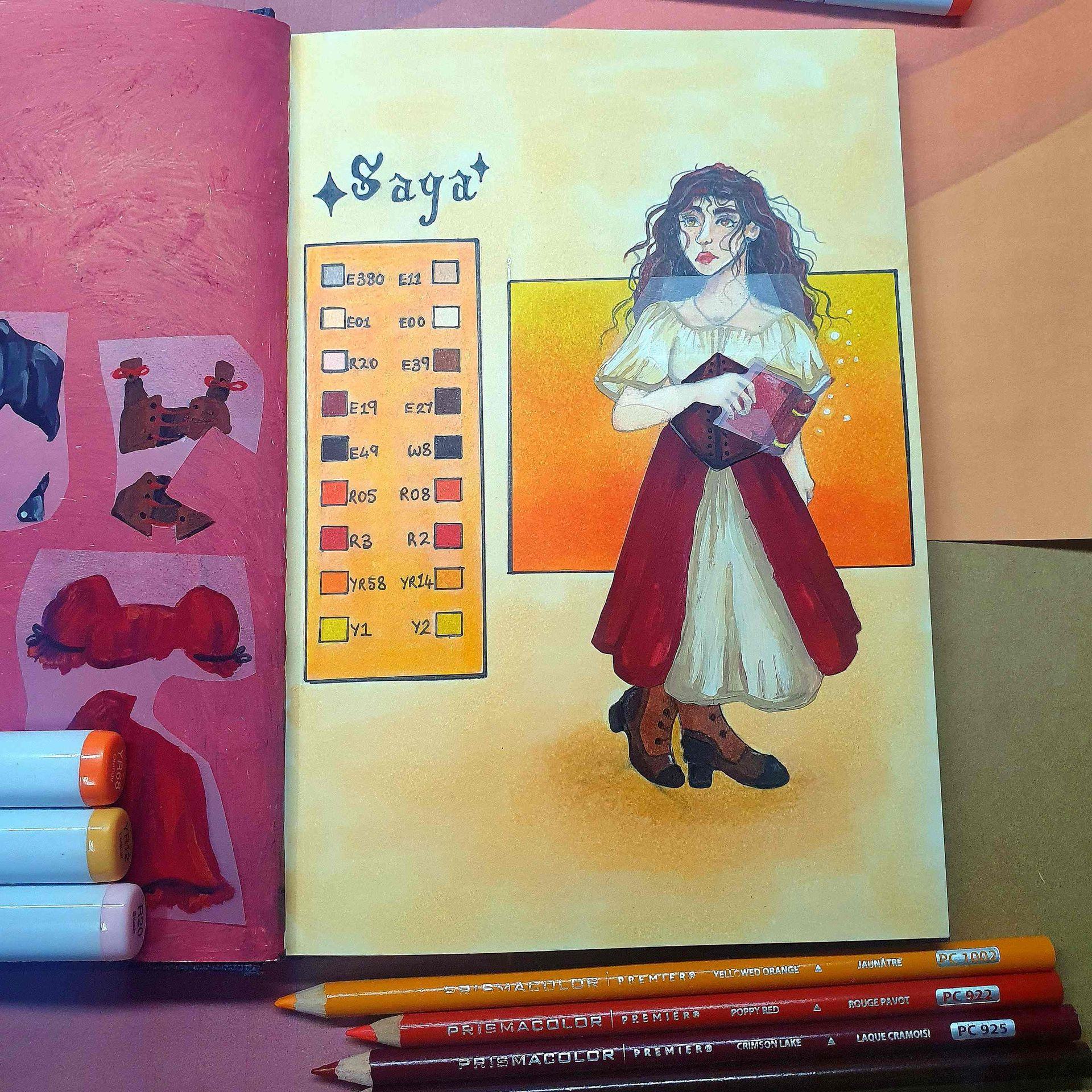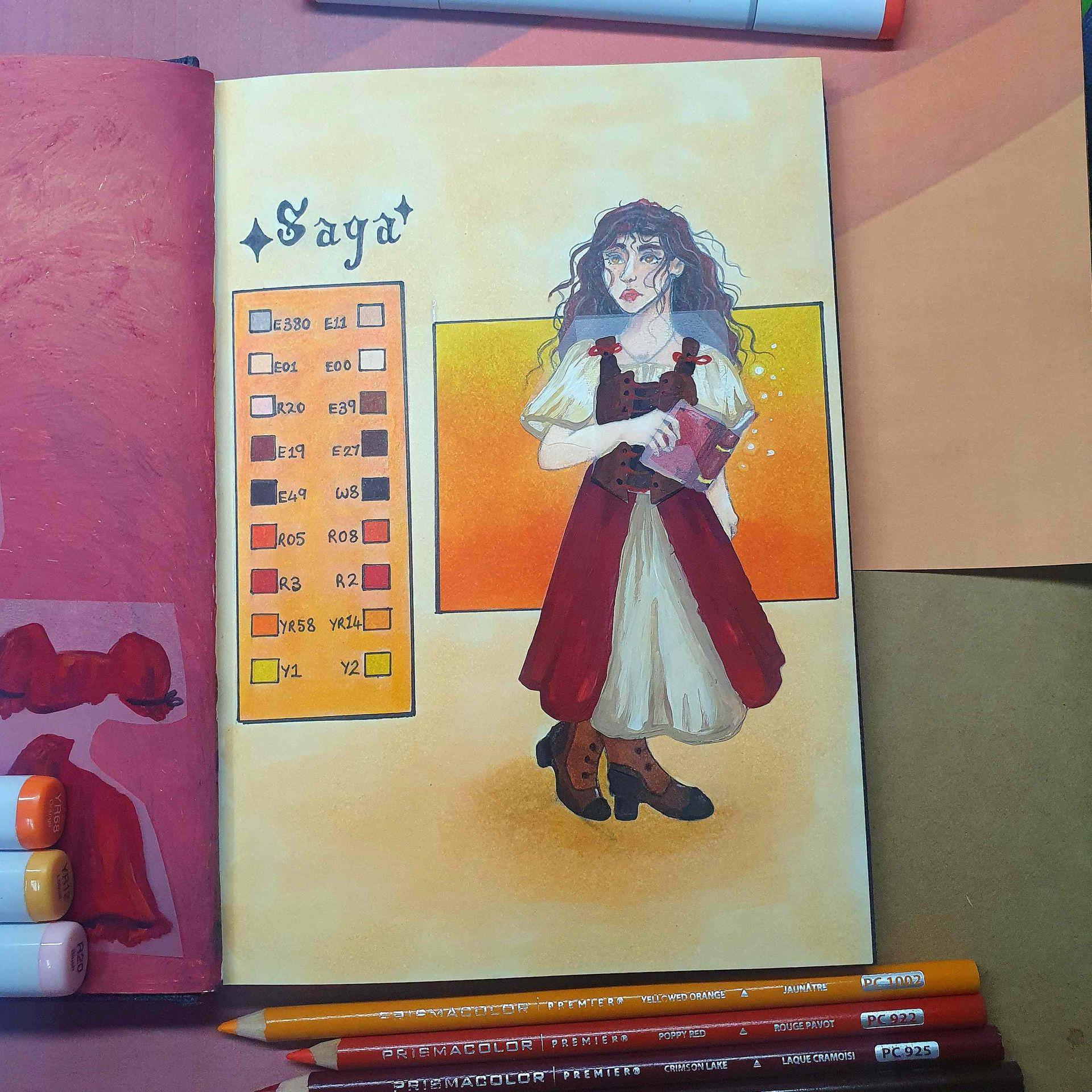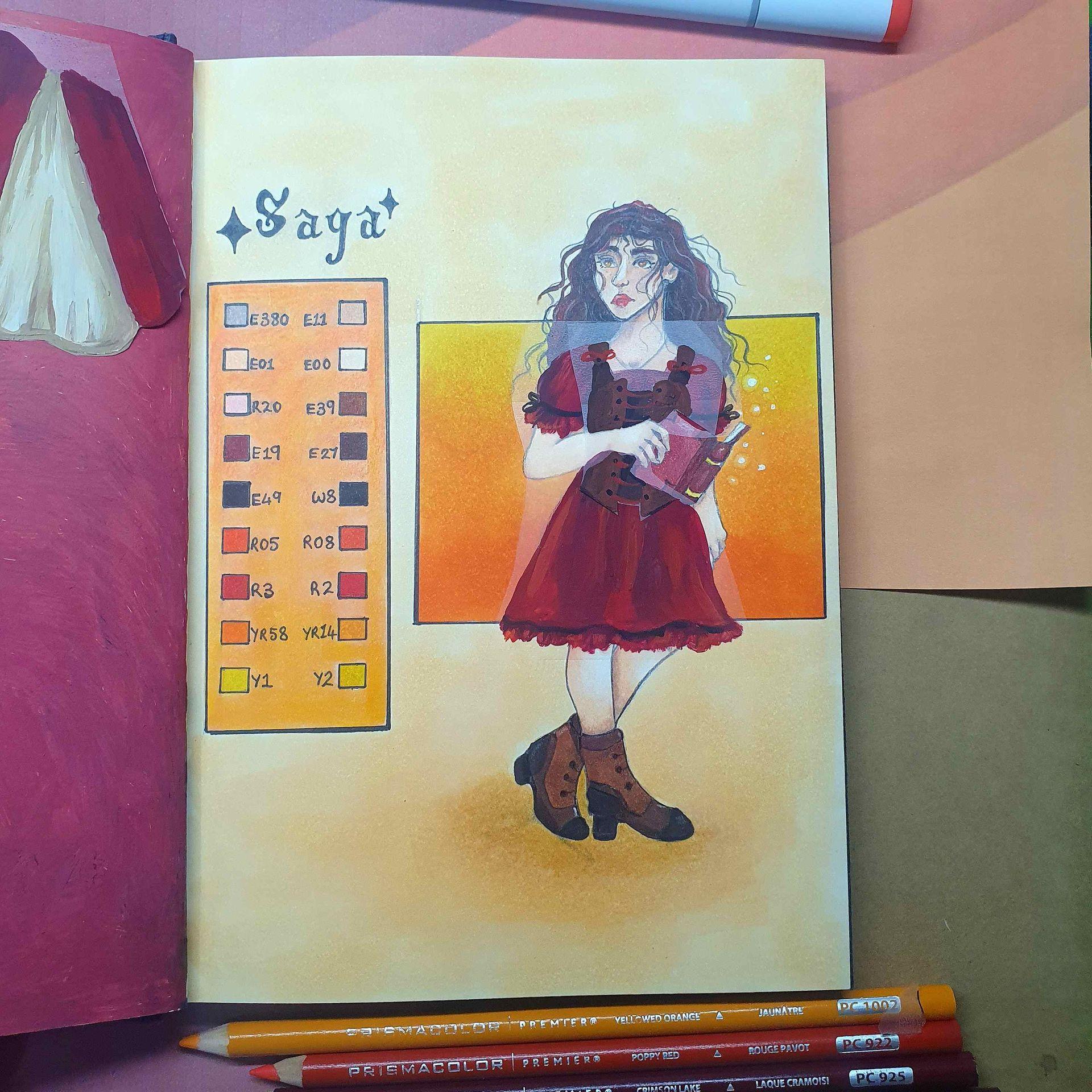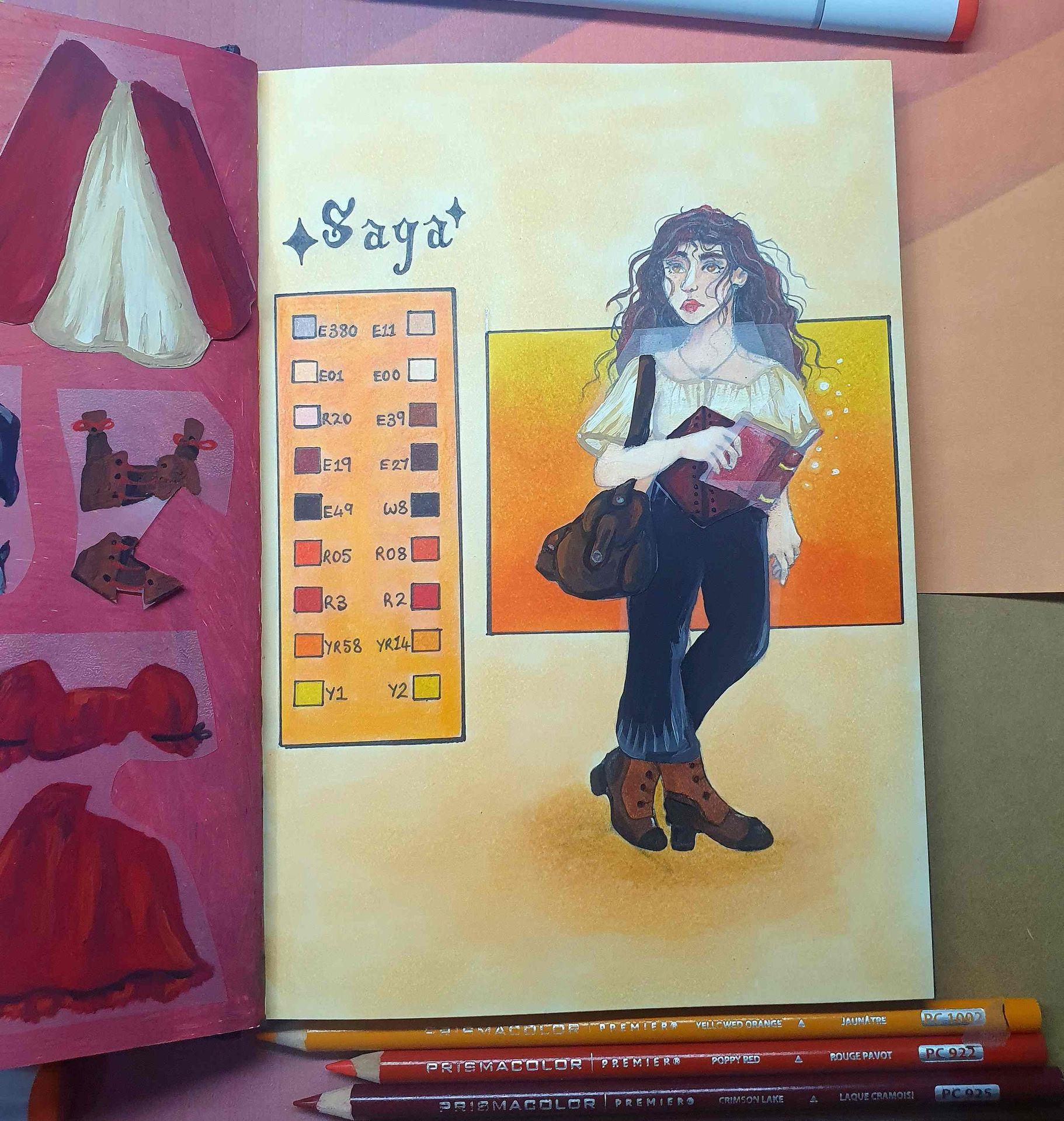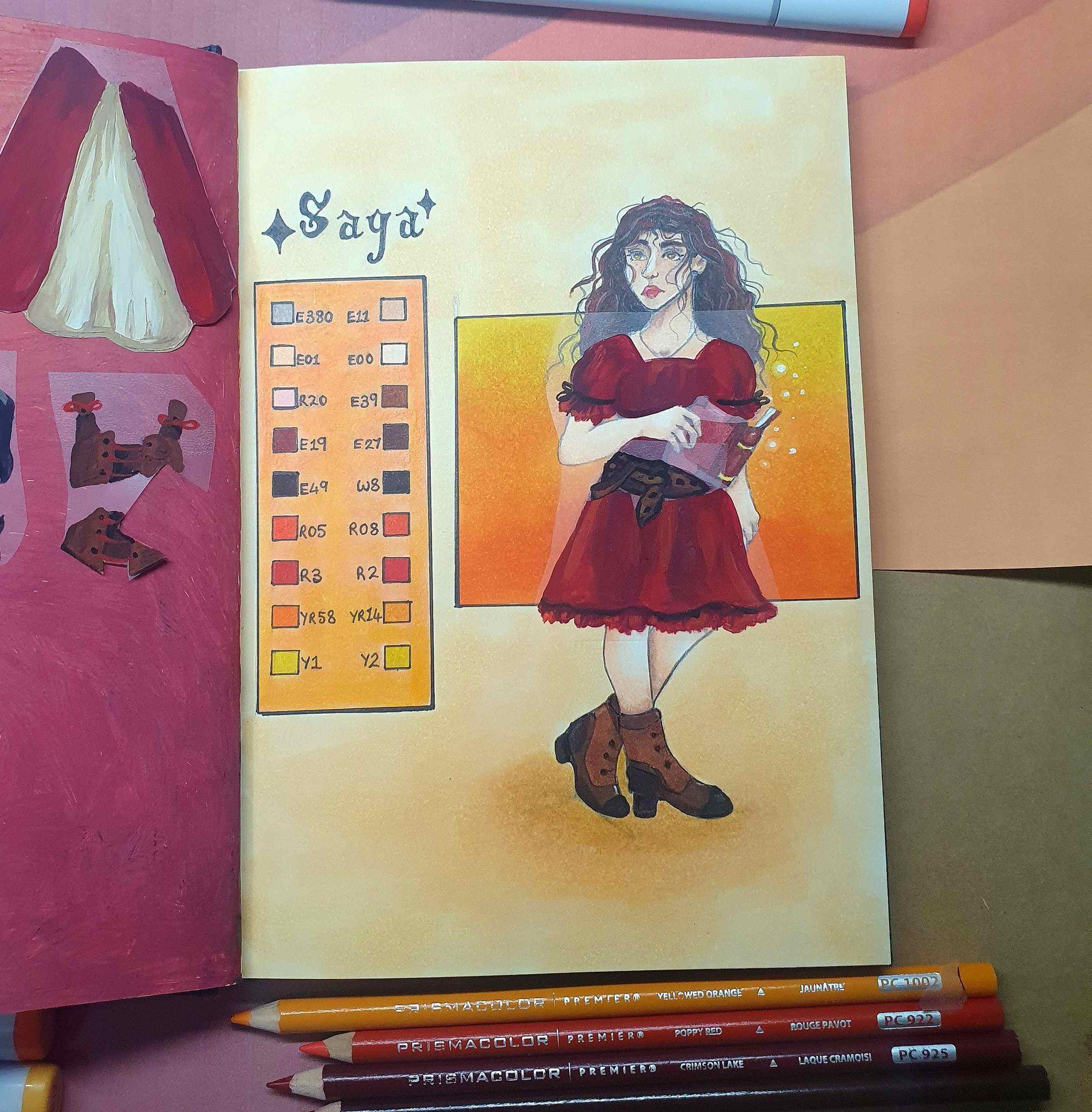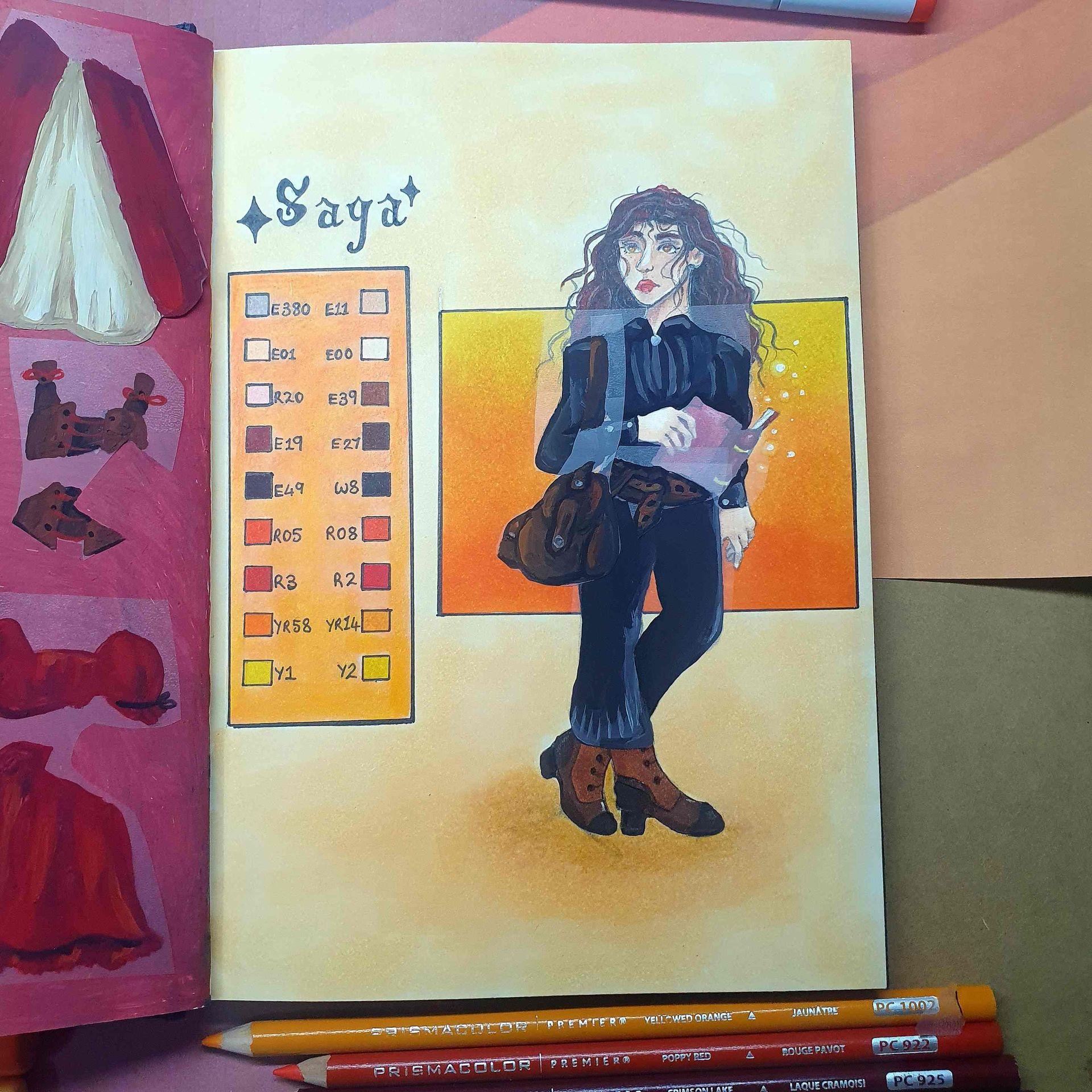Introduction-
As an artist and a writer, keeping track of ideas and concepts is very important. Designing outfits for my characters can be very tricky since I need to find a balance between something practical and something that matches my character’s personality. This illustration features my main character, Saga.
This project is a fun way to explore character concepts and fashion design, and it is something all ages can enjoy. You do not need a specific character for this drawing, and for younger students, consider printing a pre-made character to make the project more relaxing. For this blog, I will be detailing how I went about this project, however, it can be simplified or further complicated depending on the artist’s choices. For this illustration, I used my sketchbook, Copic Markers, Prismacolor Premier Coloured Pencils, Clear Sticky Notes, and Gouache Paint.
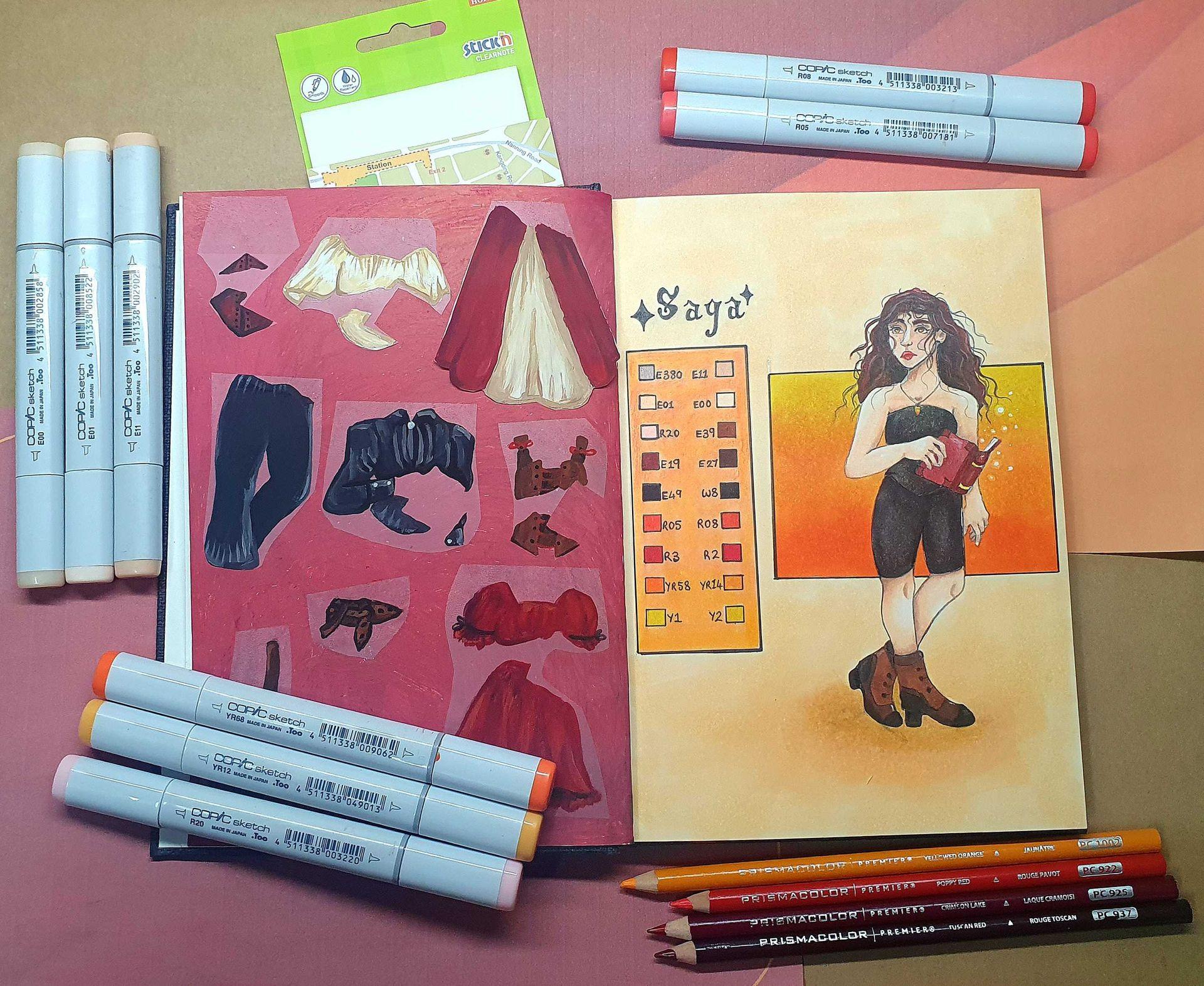
Character Design-
The first thing I needed to do was to draw my character. Saga recently went through a redesign, so I mainly focused on making her recognizable and similar to the story’s description of her. Another focus of this original design was to give her clothing that would not interfere with the designs I was going to add over the top later, keeping it close-fitting and dark in colour. I also added a section on the page in which I could write down the colours I used. Since Copic Markers each have a unique code, it is easy to write down and remember what colours I need next time I replicate her design. For this illustration, I was not too focused on giving her a complicated pose or expression. I drew her holding a book, however, as it is a good way to showcase her personality in a small-scale illustration. I also added her boots in this initial design, as she would need practical footwear to travel in and run away from her enemies. I was not planning on her changing this part of her outfit throughout the story. Adding the shoes to the initial design is optional, and the shoes could also be designed separately.
I was happy with the base design and could move on to designing her outfit.
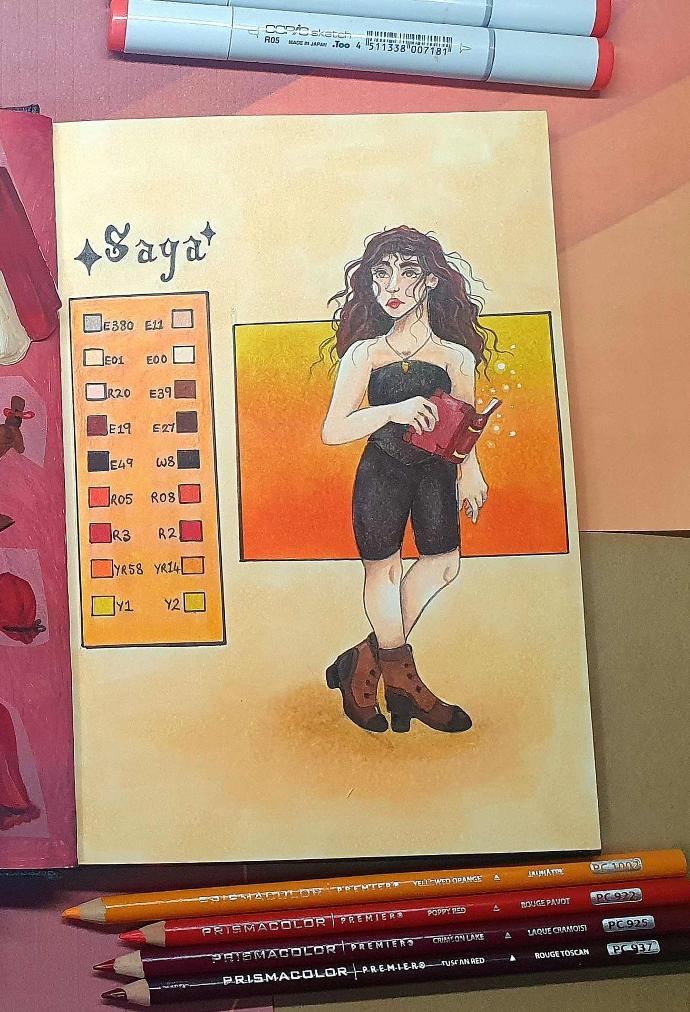
Outfits on Clear Sticky Notes-
There are a few things I needed to keep in mind with the outfits I was planning to design. Firstly, I had to consider the time period in which my character lived. Since my story takes place in a fantasy medieval period, all the outfits would be limited to the materials, dyes, and designs available during that time. The outfits would mostly be made from natural fibres and utilize easy colours to obtain such as reds, yellows, and browns. Secondly, I needed to keep the progression of the story in mind. Saga would start the story in a village, mostly assuming the role of a Storyteller and teacher. This indicates that she would wear less practical clothes, such as dresses or skirts, as well as a corset to look neater and more presentable. As the story continues and she is on the run, she needs more durable clothes, such as a shirt, pants, and a bag. Perhaps she would even modify men’s clothing to create something that she is comfortable in.
I stuck the clear sticky notes over my initial character design and sketched each article of clothing on top of the character. I drew each article of clothing on a separate sticky note, making each outfit more customizable. After each sketch, I used Gouache and painted on top of the sticky note, without removing it from the initial character drawing. By painting on top of the original design, I was able to see where each fold in the fabric would be. The clear sticky notes have a water-resistant backing, which protects the original design under the painting. I chose Gouache for the outfit paintings because of the matt texture and because it dries fairly quickly. To finish the project, I would cut around the design, making sure to leave enough of the sticky side of the sticky note intact so that each item of clothing would still stay in place.
Conclusion-
This project is very customizable, and the general steps and thought process can be applied in many ways. It is fun to experiment with mixed media, and not a lot of sketchbooks are paint-friendly. Clear sticky notes are a good way to add paint to sketchbooks without damaging the paper or the original artwork. It is a great way to help students and children think about design creatively and find out what makes a design or colour scheme good. For me, this project is important since it helps me keep track of the small details about my characters that often get lost in the story. It also helps me look at the worldbuilding of my story, figuring out what materials, colours and technology were available at the time.
Would you try this project?
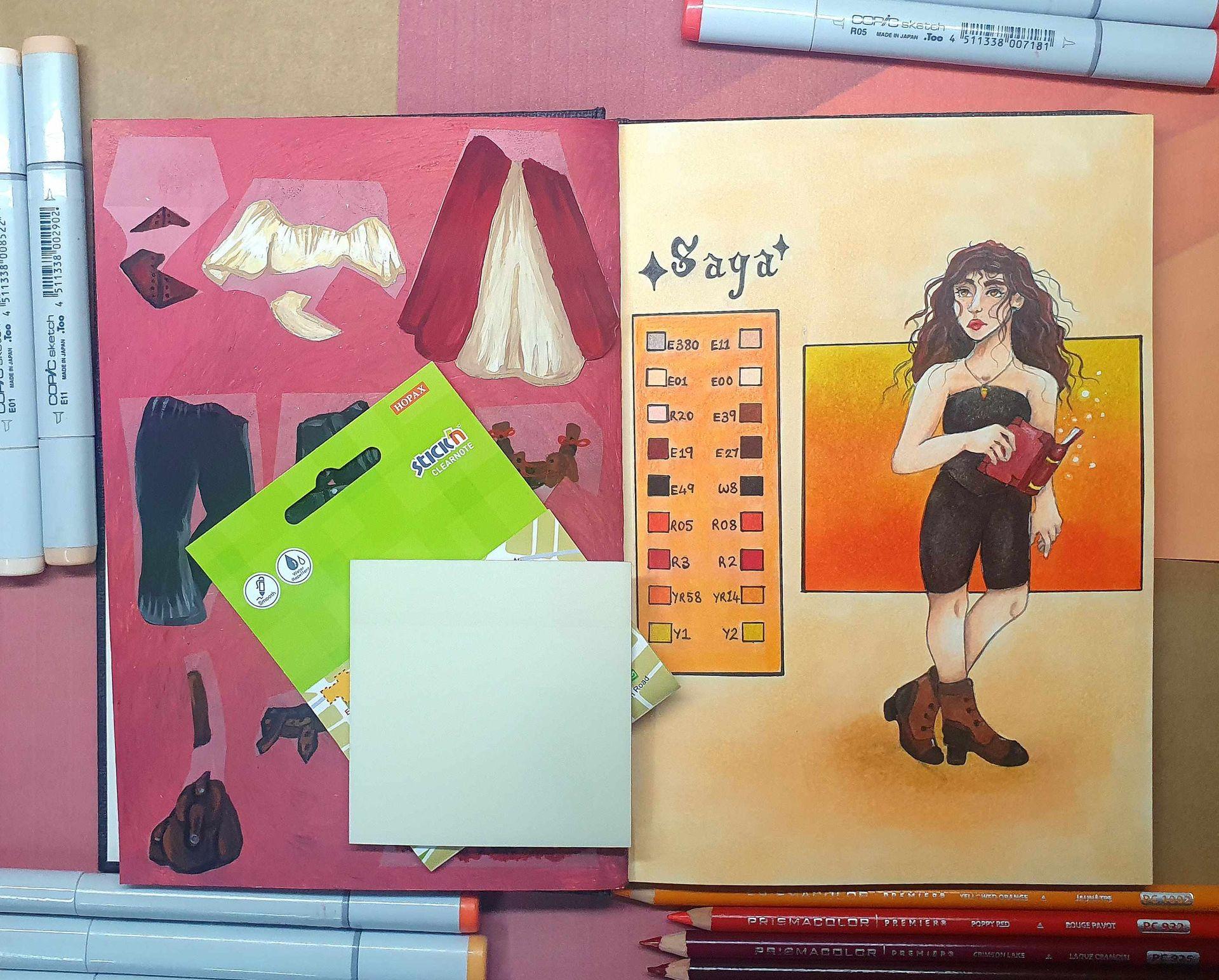
List of Materials Used and Recommended Products-
If you would like to try this project, here is a list of materials you will need:
· Paper for the initial illustration, such as sketchbook paper, cardstock, or high-quality art paper
· Clear Sticky Notes
· Markers, Coloured Pencils, Fineliners, or Paints for the initial character design
· Gouache Paint for the outfit designs
· Paint Brushes
· Water Cup to rinse your brushes
· Scissors
· Optional: Artist Fixative Spray to protect your designs
